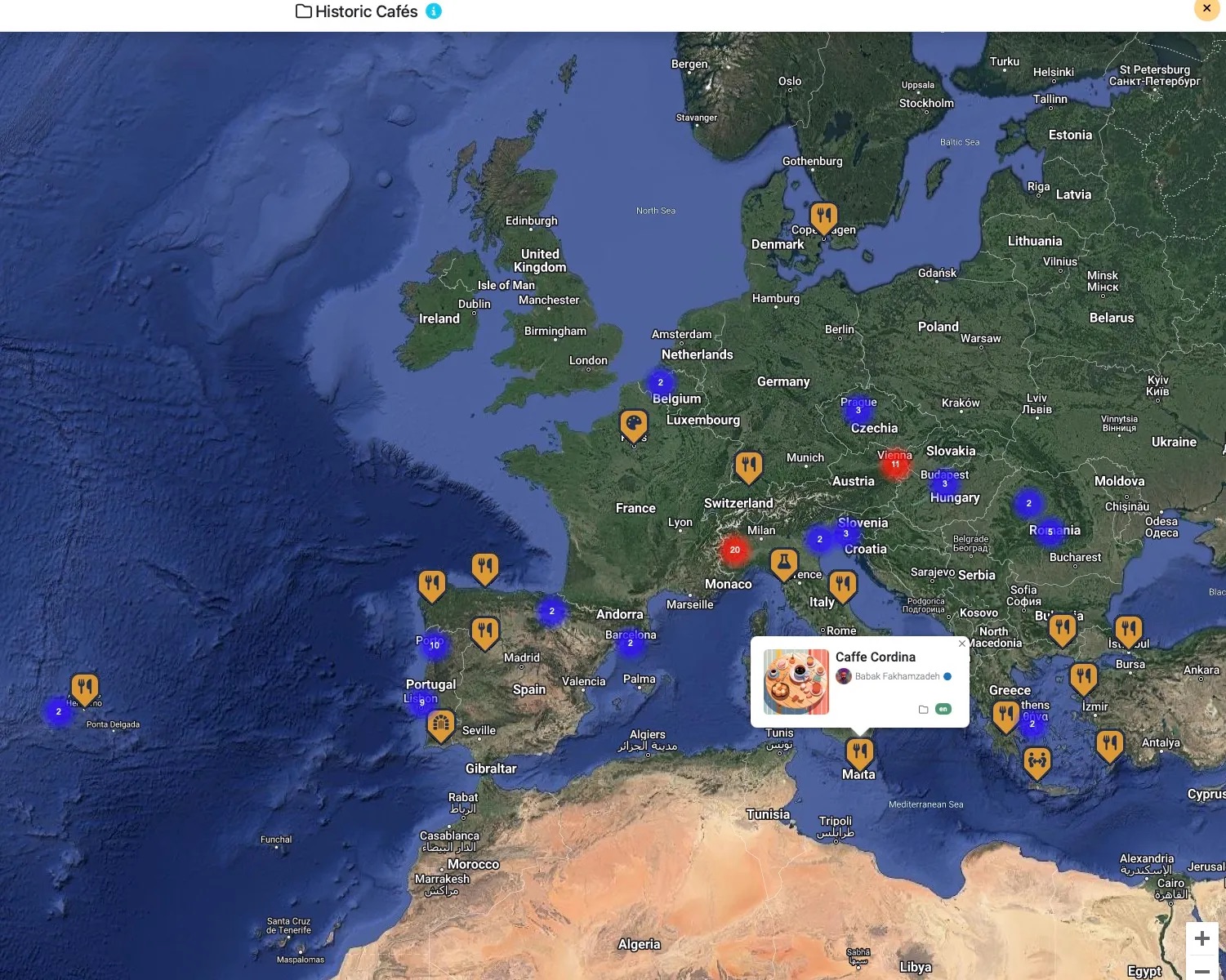
The Council of Europe, not quite the EU, but, like, the avant-garde of the EU, maintains a few dozen ‘routes’ throughout Europe, and beyond, highlighting some of the cultural, natural, and societal history of the region. A bit like UNESCO’s World Heritage Sites, but, perhaps, a bit more subtle.
One such ‘routes’ is the “Historic Cafés Route”, a collection of close to 100, well, historic cafés in about a dozen countries, mostly in the northern Mediterranean.
Mixing information from the official website of the Historic Cafés Route with information from the website’s of the individual cafés, I used AI to create narrated stories of these cafés, accompanied by illustrations made with AI, and put them on the map of Placecloud.
To call this a ‘route’ is a bit ridiculous, it would take a few months to visit all of them by car, but you can stay within the comfort of your own home, listen to the stories of these cafés, and see what they look like using Google Street View. All on Placecloud.
Credits
Hosted by: Placecloud








